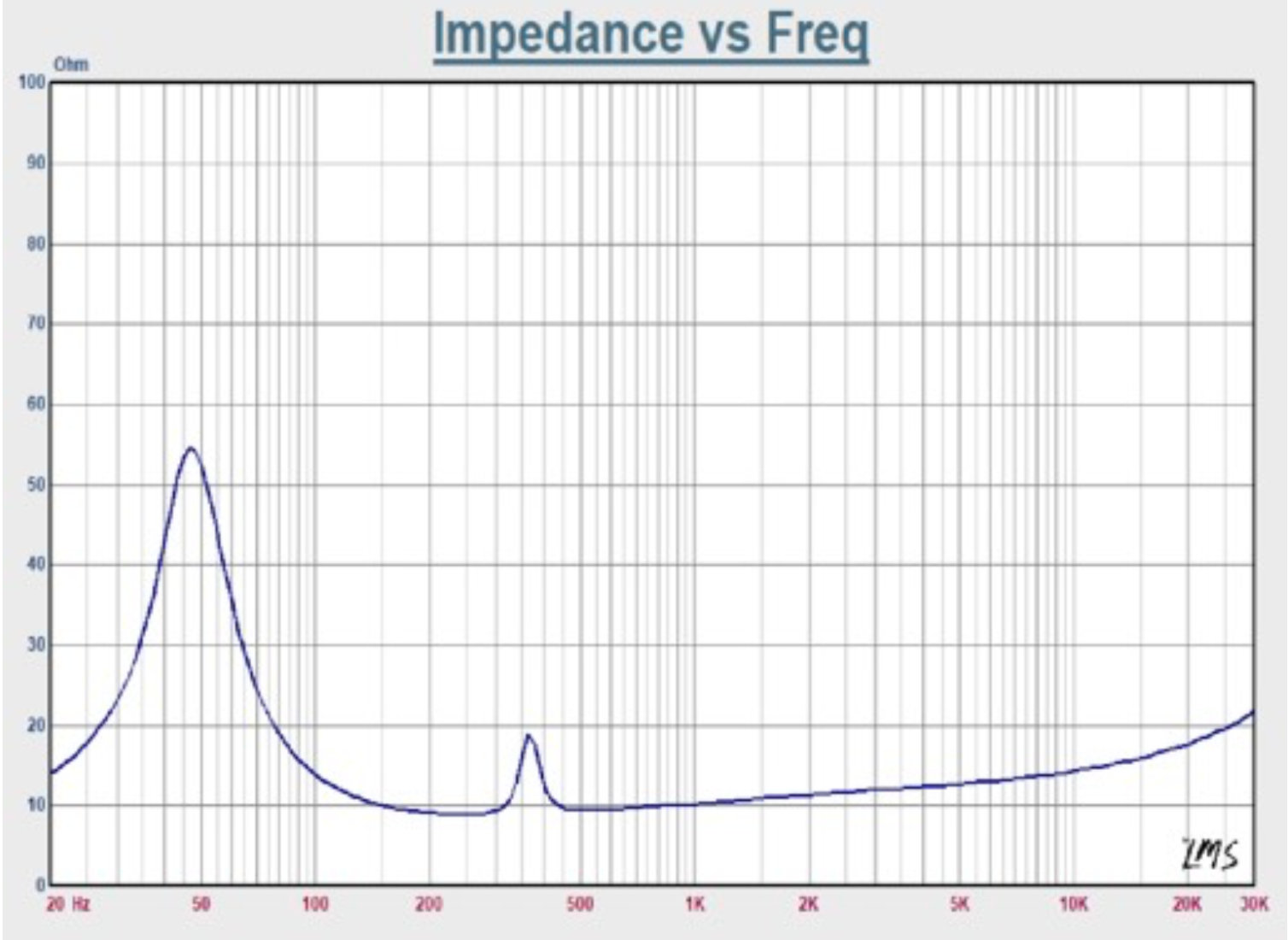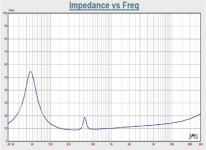The Jordan has a phase plug, none of the MA do. Dust can get into a driver with a phase plug, but in a normal mounting is not an issue, i’d avoid mounting one castle style.
To get into the gap stuff would need to travel via the inside past where the spider isn't (in the mono-suspension) or thru the ventalation holes above the spider on the voice coil bobbin.
dave
To get into the gap stuff would need to travel via the inside past where the spider isn't (in the mono-suspension) or thru the ventalation holes above the spider on the voice coil bobbin.
dave
I've yet to see signs of particle entry into the gap. Mind you, I've never mounted them other than vertical and perhaps that's a consideration for not firing them upward?
EDIT:
Oops: I answered the question considering a phase plug. Maybe the same conclusion though?
EDIT:
Oops: I answered the question considering a phase plug. Maybe the same conclusion though?
Last edited:
The CHN 110 data + a number of Dr Scott’s designs, 3 reflex boxes, an intro to the Woden Festival Series of ML-V and the Pensil.
https://frugal-phile.com/downloads/CHN110-w-plans-1v1-141119.pdf
dave
Note: there is an earlier version that you may see with copies of Scott’s working sketches.
https://frugal-phile.com/downloads/CHN110-w-plans-1v1-141119.pdf
dave
Note: there is an earlier version that you may see with copies of Scott’s working sketches.
Does anyone have experiences or suggestions of DIY a pair of Markaudio Dolby Atmos speakers, sitting on top of the main speakers aiming at the ceiling? I am thinking a simple sealed box. Not sure which woofers to use.
Chris is using P7 in Plu-Kens, you idea seems feasible.
dave
Hi all, what speaker cable do you guys recommend using with MarkAudio?
I have just switched out my MacMini for a dedicated music server, Innuos Zenmini & the improvement in sound quality has prompted me to investigate other areas of my system to see if I can make further improvements, I’m currently using VanDamme 1.5mm speaker cable.
I have just switched out my MacMini for a dedicated music server, Innuos Zenmini & the improvement in sound quality has prompted me to investigate other areas of my system to see if I can make further improvements, I’m currently using VanDamme 1.5mm speaker cable.
Given that situation, you have a lot more latitude.

When Scott talks about EQ he is talking about the effect of high impedance speaker wire on FR.
In this case, even thou 6m is quite long (you want both wires to be the same length), that they are being used above 250 Hz, well above the drivers bass resonance that bump is not an issue. The slight rise at the top likely will not have any effect given the (strongly suspected) low output impedance of the Lyndorf. The dip near the XO corresponds closely with the measured dip at the same frequency, this could act to lift it a bit… it might mess a bit with your XO, active or passive.
I like small solid core wire. My desfault is a pair of solid 24g wires pulled from a CAT 5 cable, but more exotic variations along that line are available.
I suggest trying a spectrum of cables, listening for maximum detail/information.
What kind of box are teh A11ms in? They may contribute their own impedance issues.
dave
When Scott talks about EQ he is talking about the effect of high impedance speaker wire on FR.
In this case, even thou 6m is quite long (you want both wires to be the same length), that they are being used above 250 Hz, well above the drivers bass resonance that bump is not an issue. The slight rise at the top likely will not have any effect given the (strongly suspected) low output impedance of the Lyndorf. The dip near the XO corresponds closely with the measured dip at the same frequency, this could act to lift it a bit… it might mess a bit with your XO, active or passive.
I like small solid core wire. My desfault is a pair of solid 24g wires pulled from a CAT 5 cable, but more exotic variations along that line are available.
I suggest trying a spectrum of cables, listening for maximum detail/information.
What kind of box are teh A11ms in? They may contribute their own impedance issues.
dave
Attachments
If you're only running above 250Hz, then there is less in the way of significant impedance swings or current demands, so as Dave says, this removes the major potential issue (which can sometimes be beneficial in itself with low Q drivers run on the end of low output impedance amplifiers, assuming this is factored into the alignment) & may be worth trying -especially as it's cheap. 
Possibly / potentially, but it depends on circumstance (as in specific driver, particularly its motor design & midrange - HF impedance + FR characteristics, along with those of the amplifier) so no fixed answer to that. I have some data filed away but currently laid up in bed & dragging myself to my office PC isn't high on my priority list today if you'll forgive me.  Since many people have or can access offcuts of CAT5 or its gauge equivalent, the cost is pennies and a few minutes of time to play with, so on the whole, one of life's less harmful activities.
Since many people have or can access offcuts of CAT5 or its gauge equivalent, the cost is pennies and a few minutes of time to play with, so on the whole, one of life's less harmful activities.
Are there any technical/sound advantages to using thin high resistance speaker wires where LF boost is not needed?
Depends. According to Hawksford, yes it does. Some have refuted his claims (even w a math degree the math is beyond me) but he reviewed his work and Malcolm stands behind it.
Just listening tests but i agree with him.
Now in this case 6m might well be pushing it… low resistance, skinny, and solid leads to then foils as conductors, or as Nordost does, many solid/skinny wires in a flat, ribbon-like configuration.
dave
Depends how lazy i am.
You can separate them and lay them out parallel w a bit of space between them (i used packing tape to hold them together)…
or you can wrap them around a cylindrical substrate such that the wires cross as close to perpendicular as possible (teflon, teflon foam would be ideal, but Chris successfully used fish tank hose — add a fancy braided sleeve and it looks like you could have bought it at the hifi shop).
dave
You can separate them and lay them out parallel w a bit of space between them (i used packing tape to hold them together)…
or you can wrap them around a cylindrical substrate such that the wires cross as close to perpendicular as possible (teflon, teflon foam would be ideal, but Chris successfully used fish tank hose — add a fancy braided sleeve and it looks like you could have bought it at the hifi shop).
dave
- Home
- Loudspeakers
- Full Range
- New Markaudio Drivers
